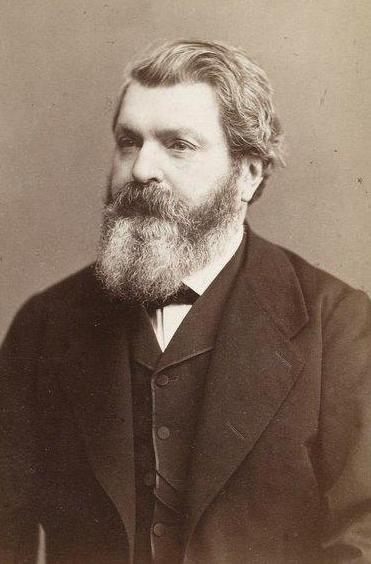Schmarda on:
[Wikipedia]
[Google]
[Amazon]
 Ludwig Karl Schmarda (23 August 1819 – 7 April 1908) was an
Ludwig Karl Schmarda (23 August 1819 – 7 April 1908) was an
 Ludwig Karl Schmarda (23 August 1819 – 7 April 1908) was an
Ludwig Karl Schmarda (23 August 1819 – 7 April 1908) was an Austrian
Austrian may refer to:
* Austrians, someone from Austria or of Austrian descent
** Someone who is considered an Austrian citizen, see Austrian nationality law
* Austrian German dialect
* Something associated with the country Austria, for example: ...
naturalist and traveler, born at Olmütz
Olomouc (, , ; german: Olmütz; pl, Ołomuniec ; la, Olomucium or ''Iuliomontium'') is a city in the Czech Republic. It has about 99,000 inhabitants, and its larger urban zone has a population of about 384,000 inhabitants (2019).
Located on th ...
, Moravia
Moravia ( , also , ; cs, Morava ; german: link=yes, Mähren ; pl, Morawy ; szl, Morawa; la, Moravia) is a historical region in the east of the Czech Republic and one of three historical Czech lands, with Bohemia and Czech Silesia.
The m ...
.
Early life and education
Schmarda was born atOlmütz
Olomouc (, , ; german: Olmütz; pl, Ołomuniec ; la, Olomucium or ''Iuliomontium'') is a city in the Czech Republic. It has about 99,000 inhabitants, and its larger urban zone has a population of about 384,000 inhabitants (2019).
Located on th ...
where he attended the Grammar School and the Philosophical Course at the University of Olomouc. He graduated in 1841. He studied medicine and science at the Josephinum, now part of the Medical University of Vienna , particularly interested in zoology, graduating in 1843 as "Dr Med et Chir.", as well as Magister of Ophthalmology and Gynecology.
Career
In 1843 he was appointed Chief Field Physician to the dragoon regiment, a mounted infantry ("Dragonerregiment"), and at the same time acted as assistant to "special natural history" at the Josephsakademie. During two scientific journeys to the Adriatic Sea, in 1844 and 1846, he made collections of marine life. In 1848, he became a teacher of natural history and geography at the secondary school in Graz. In 1848/49 he lectured at Joanneum on anthropology as a science and represented the School of Agriculture in 1848 and 1850. In 1850 he was appointedprofessor
Professor (commonly abbreviated as Prof.) is an academic rank at universities and other post-secondary education and research institutions in most countries. Literally, ''professor'' derives from Latin as a "person who professes". Professors ...
at the University of Graz
The University of Graz (german: link=no, Karl-Franzens-Universität Graz, ), located in Graz, Austria, is the largest and oldest university in Styria, as well as the second-largest and second-oldest university in Austria.
History
The univers ...
, where he founded the Zoological Museum (in the present day Joanneum Natural History Museum), and in 1852 at Prague
Prague ( ; cs, Praha ; german: Prag, ; la, Praga) is the capital and List of cities in the Czech Republic, largest city in the Czech Republic, and the historical capital of Bohemia. On the Vltava river, Prague is home to about 1.3 milli ...
.
From 1853–1857 he traveled around the world and in 1862 he was appointed professor at the University of Vienna
The University of Vienna (german: Universität Wien) is a public research university located in Vienna, Austria. It was founded by Duke Rudolph IV in 1365 and is the oldest university in the German-speaking world. With its long and rich hist ...
. For the government he investigated the industry of fisheries on the Austrian (1863–1865) and French (1868) coasts. In 1883 he retired from service, and visited Spain
, image_flag = Bandera de España.svg
, image_coat = Escudo de España (mazonado).svg
, national_motto = ''Plus ultra'' (Latin)(English: "Further Beyond")
, national_anthem = (English: "Royal March")
, i ...
and the African coast in 1884, 1886, and 1887.
Legacy
Schmarda is credited with being the first scientist to have published the observation that microorganisms respond to light, which is considered the foundation for the development ofultraviolet germicidal irradiation
Ultraviolet germicidal irradiation (UVGI) is a disinfection method that uses short-wavelength ultraviolet (ultraviolet C or UV-C) light to kill or inactivate microorganisms by destroying nucleic acids and disrupting their DNA, leaving them unabl ...
.
Published works
*''Andeutungen aus dem Seelenleben der Thiere'' (1846) – Hints on the mental life of animals. *''Zur Naturgeschichte der Adria'' (1852) – On the natural history of theAdriatic Sea
The Adriatic Sea () is a body of water separating the Italian Peninsula from the Balkan Peninsula. The Adriatic is the northernmost arm of the Mediterranean Sea, extending from the Strait of Otranto (where it connects to the Ionian Sea) to t ...
.
*''Die geographische Verbreitung der Thiere'' (1853) – The geographical distribution of animals
*''Zur Naturgeschichte Aegyptens'' (1854) – Natural history of Egypt
Egypt ( ar, مصر , ), officially the Arab Republic of Egypt, is a transcontinental country spanning the northeast corner of Africa and southwest corner of Asia via a land bridge formed by the Sinai Peninsula. It is bordered by the Medit ...
.
*''Neue wirbellose Thiere'' (1859–1861) – New invertebrate animals.
*''Reise um die Erde'' (1861) – Journey around the world.
*''Zoologie'' (1871; second edition, 1877–1878), (a textbook for higher institutions).
Notes
References
* Attribution: * {{DEFAULTSORT:Schmarda, Ludwig Karl Austrian naturalists Austrian male writers 1819 births 1908 deaths Scientists from Olomouc